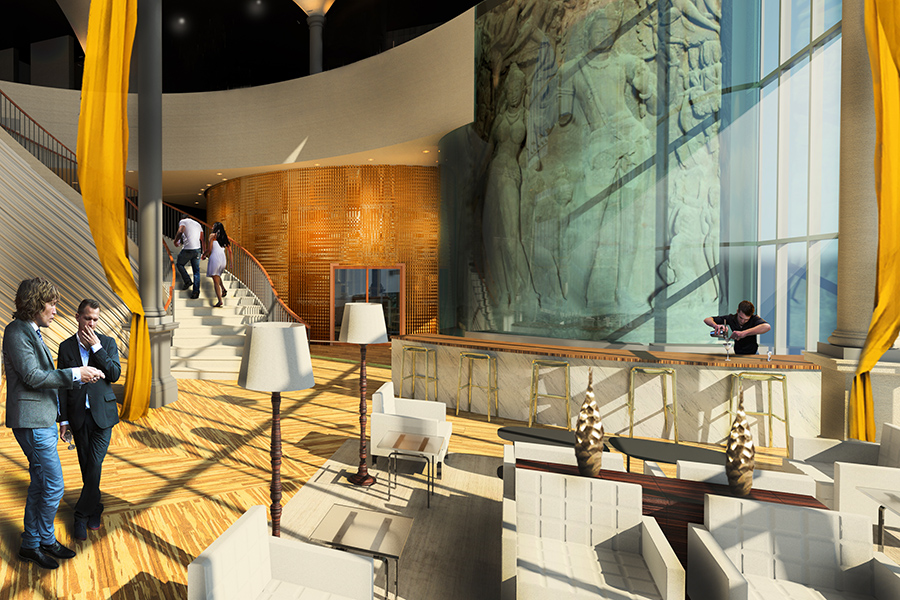Interior design themes serve as the creative backbone of a space, influencing its overall look, feel, and functionality. Whether you prefer the timeless charm of traditional aesthetics or the sleek lines of modern design, choosing the right theme can transform a room into a personal sanctuary or a dynamic workspace.
What Are Interior Design Themes?
Interior design themes are overarching concepts that guide the selection of colors, materials, furniture, and decorative elements. These themes create visual coherence and help articulate the personality and purpose of a space. By aligning every design element with a chosen theme, designers can craft environments that resonate with their occupants.
Popular Interior Design Themes
- Minimalist
- Description: A focus on simplicity, clean lines, and uncluttered spaces.
- Key Features: Neutral colors, functional furniture, and minimal decor.
- Ideal For: Small spaces, modern apartments, and anyone seeking a clutter-free lifestyle.
- Vintage
- Description: A nostalgic style that embraces elements from the past.
- Key Features: Antique furniture, distressed finishes, and floral patterns.
- Ideal For: Lovers of history and charm, or spaces like cozy reading nooks.
- Rustic
- Description: Inspired by nature, this theme uses raw and natural materials.
- Key Features: Exposed wood beams, stone accents, and earthy tones.
- Ideal For: Cabins, farmhouses, and anyone drawn to a warm, organic vibe.
- Coastal
- Description: Evoking the serenity of the seaside, this theme is light and breezy.
- Key Features: Shades of blue and white, natural fibers, and nautical decor.
- Ideal For: Beach houses or spaces seeking a relaxed, airy atmosphere.
- Industrial
- Description: Reflecting urban influences, this theme incorporates raw materials and mechanical details.
- Key Features: Exposed pipes, concrete floors, and metal finishes.
- Ideal For: Lofts, offices, and those who appreciate a bold, edgy aesthetic.
- Eclectic
- Description: A blend of various styles and influences to create a personalized look.
- Key Features: Vibrant colors, diverse patterns, and unique artifacts.
- Ideal For: Free spirits and spaces that tell a story.
Choosing the Right Theme
- Consider Your Lifestyle:
- A minimalist theme suits busy individuals seeking low-maintenance spaces, while eclectic designs reflect a creative and adventurous spirit.
- Evaluate the Space:
- Smaller spaces benefit from minimalist or Scandinavian themes, whereas large rooms can accommodate bold themes like industrial or vintage.
- Reflect Personal Preferences:
- Your home should feel like a reflection of your personality. Choose themes that resonate with your taste and inspire comfort.
- Plan a Budget:
- Some themes, like vintage or rustic, may require investments in unique or custom pieces, while minimalist designs can be more budget-friendly.
Blending Themes: The Art of Fusion
Combining themes can create a dynamic and personalized space. For example, a rustic-industrial fusion pairs natural wood with metal finishes, while coastal-eclectic combines breezy colors with bold patterns. Successful blending relies on maintaining balance and ensuring a cohesive color palette.
Tips for Implementing a Theme
- Start with a Focal Point: A statement piece, such as an accent wall or a unique piece of furniture, can anchor the design.
- Layer Textures: Use fabrics, rugs, and decor to add depth and richness to the theme.
- Incorporate Lighting: The right lighting enhances the mood and complements the theme.
- Stay Consistent: Ensure all elements align with the chosen theme to avoid visual clutter.
Conclusion
Interior design themes are powerful tools for crafting spaces that are both functional and aesthetically pleasing. Whether you lean toward minimalist simplicity or vintage charm, the right theme can transform any area into a reflection of your style and purpose. Embrace your creativity, explore various themes, and let your space tell its own unique story.
